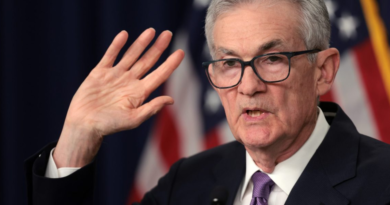Why a 26-year-old content creator with a six-figure business only spent $75 on her wedding dress
Hannah Williams has become a TikTok phenomenon with a simple formula. Under her brand, Salary Transparent Street, she asks random passersby what they do for work and how much they make. Since April of last year, Williams, 26, has amassed 1.3 million TikTok followers and nearly 32 million likes. She also just landed on Forbes’ 30 Under 30 list and, per Forbes, has notched over $1 million in brand deals. She shares all the credit with her only full-time employee: Her cameraman and new husband, whom she wed this year in an event costing just $11,000.
A TikTok video Williams made breaking down the cost of her wedding was enormously popular among her audience, she told Fortune in a recent interview.
Their ceremony venue was free (they wedded in Gravelly Point Park just outside D.C., where people often picnic to watch planes soar at close range overhead to nearby Ronald Reagan Airport.) Williams’ simple, billowy white dress was $75.65; her husband’s suit was $752.40; their rings together came to $2,380; a photographer cost $2,600; their reception venue—Spider Kelly’s, a bar in Arlington—replete with an open bar and buffet cost $4,400; the bouquet Williams held cost $134.86; the couple’s matching sneakers totaled to $190.80; a rental Porsche cost $170, plus $10 for gas; temporary custom tattoos for guests came to $45.58; a macaroon tower, in lieu of a cake, cost $240; a Polariod guest book was $180; they used a Spotify playlist, which cost nothing, to avoid paying a DJ.
Grand total: about $11,000. (The average American wedding last year cost about $30,000. In the D.C. area, where Williams got married, that’s closer to $60,000.) The wedding industry as a whole is boiling over; it’s worth over $70 billion in the U.S. alone.
“We got some really interesting comments—definitely the cheap wedding dress versus expensive tux was a huge point of contention, but I didn’t even give it a second thought,” Williams said. She only created the video in alignment with the mission of each of her other videos: Transparency, which is proven to improve equal pay.
While $11,000 is significantly less than what the average couple spends on their nuptials—and Williams and her partner earn six-figure incomes with no kids—she nonetheless planned to spend no more than $5,000 originally. The couple “wasn’t super happy about” ending up with a bill more than twice that much.
“People now see us as celebrities of some kind,” she said. That carries an expectation that, if you make a lot of money, your wedding spend should demonstrate your wealth. “I think that’s wrong.”
The attention to her personal expenditures (and that of any influencer or celebrity) is ultimately unhealthy, Williams said. “My husband and I really just cared about making it a special day that was personal to us,” she said. As for the extremely inexpensive wedding dress—$76 compared to the national average, $1,900—Williams said she thinks spending thousands of dollars for a one-day dress is “insane.”
“I say that lightly [because] a lot of brides do it, and I’m not judging at all,” she added. “I think people should spend money on what’s special to them.” Plus, Williams had a “really hard time” finding a dress she liked, so she was thrilled with the $76 dress she landed on. “I thought it was amazing, [and] it allowed us to spend money on other aspects [of the day] that were more important to both of us.”
Another area she didn’t shell out on: Her engagement ring, which she said cost about $2,000. (National average: About $6,000.) Bucking tradition, she opted for, instead of a diamond, a moissanite ring, a vastly more affordable lab-grown stone. A diamond, a fixture of engagement culture, didn’t matter nearly as much to Williams as the marriage itself.
“I have this traumatizing memory of my mom losing her engagement ring—a real diamond—when I was a kid,” she added. “I’m very clumsy; I do a lot with my hands. So I didn’t want a situation of losing a ring worth a ton of money. I felt [$2,000] was a fair amount to spend—I’m just hoping I don’t lose it in 10 years.”



